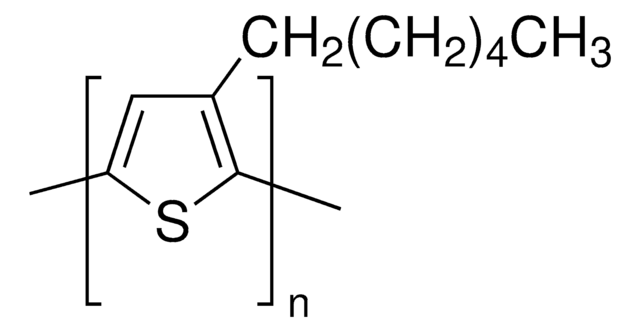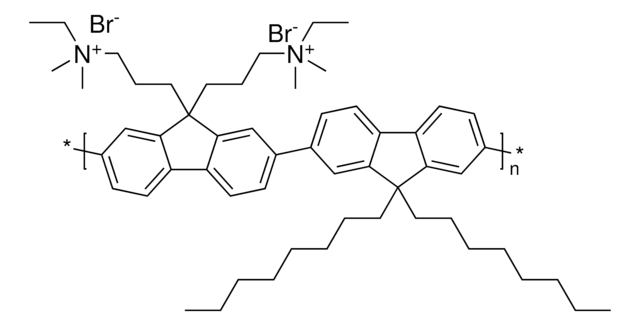932418
Poly[bis(4-phenyl)(2,4,6-trimethylphenyl)amine]
Synonyme(s) :
PTAA, Poly[[(2,4,6-trimethylphenyl)imino][1,1′-biphenyl]-4,4′-diyl]
About This Item
Produits recommandés
Description
μh ≈ 10-2 to 10−3 cm2 V−1 s−1
Niveau de qualité
Poids mol.
Mw 20,000-100,000 by GPC
Solubilité
chlorobenzene: soluble
chloroform: soluble
toluene: soluble
λmax
388 nm±5 nm in dichloromethane
Fluorescence
λex 414-434 nm in dichloromethane
Énergie orbitale
HOMO 5.3 eV
LUMO 2.3 eV
Vous recherchez des produits similaires ? Visite Guide de comparaison des produits
Catégories apparentées
Application
Code de la classe de stockage
11 - Combustible Solids
Classe de danger pour l'eau (WGK)
WGK 3
Point d'éclair (°F)
Not applicable
Point d'éclair (°C)
Not applicable
Faites votre choix parmi les versions les plus récentes :
Certificats d'analyse (COA)
It looks like we've run into a problem, but you can still download Certificates of Analysis from our Documents section.
Si vous avez besoin d'assistance, veuillez contacter Service Clients
Déjà en possession de ce produit ?
Retrouvez la documentation relative aux produits que vous avez récemment achetés dans la Bibliothèque de documents.
Notre équipe de scientifiques dispose d'une expérience dans tous les secteurs de la recherche, notamment en sciences de la vie, science des matériaux, synthèse chimique, chromatographie, analyse et dans de nombreux autres domaines..
Contacter notre Service technique
![[6,6]-Phenyl C61 butyric acid methyl ester ≥99%](/deepweb/assets/sigmaaldrich/product/structures/359/221/d990c746-0960-4c69-bf76-fe09b193824d/640/d990c746-0960-4c69-bf76-fe09b193824d.png)




![Di-[4-(N,N-di-p-tolyl-amino)-phenyl]cyclohexane ≥97% (HPLC)](/deepweb/assets/sigmaaldrich/product/structures/111/787/16bde1ce-c76d-46d6-9e1f-9ce09f82d038/640/16bde1ce-c76d-46d6-9e1f-9ce09f82d038.png)


